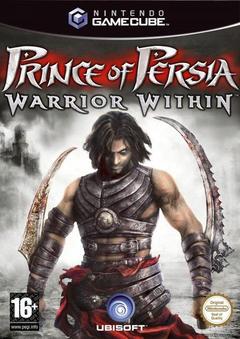prince of persia
Prince of Persia
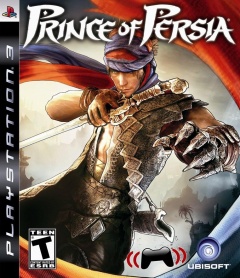 The success of Prince of Persia: The Sands of Time completely rejuvenated a left for dead franchise. From a series that was known for its challenging, timed gameplay, rose a 3D incarnation that was nearly beloved by both the gaming press and gamers themselves. Setting the gears in motion for sequels, spinoffs, and a movie, The Sands of Time was both a trendsetter for many future titles and an acknowledgement to its roots.
The success of Prince of Persia: The Sands of Time completely rejuvenated a left for dead franchise. From a series that was known for its challenging, timed gameplay, rose a 3D incarnation that was nearly beloved by both the gaming press and gamers themselves. Setting the gears in motion for sequels, spinoffs, and a movie, The Sands of Time was both a trendsetter for many future titles and an acknowledgement to its roots.
A few years after its immediate trilogy sputtered off, Ubisoft tried to remake the prince once again with Prince of Persia, no subtitle. Much like the NES Ninja Gaiden and the Xbox Ninja Gaiden, Prince of Persia was annoyingly named the exact same as the original game twenty years its predecessor. But if fans were expecting an even closer imitation of the original, they would be quite surprised with the bigger changes made by Ubisoft.
Prince of Persia (2008, not 1989) received mixed reviews with attention to the excellent art and animation, but some disdain towards the game’s reported simple difficulty. What attracted me to reviewing the game’s first hour was definitely the art style. Borrowing the watercolor look from Okami was definitely a brave move by a generally conservative Ubisoft, and I am hoping some of that creativity might have run over to the parkour and fighting elements of the game. Let’s take a look.
Prince of Persia: The Forgotten Sands
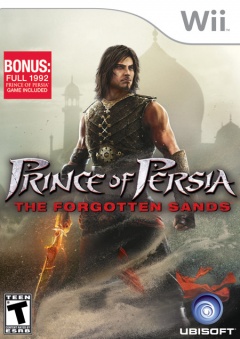 Hollywood and video games have never had a healthy relationship. Ever
since the Super Mario Bros movie ruined millions of childhoods, video
game franchises of all kinds have received blasphemous silver screen
adaptations. The latest mainstream abuse of a video game license comes
from Prince of Persia: The Sands of Time. I'm not one to praise the
narrative of most games, but I really enjoyed the bittersweet fable of
the Prince and Farah that the 2002 hit presented. I've heard less
favorable things about the movie, and I don't think I want to see how it
ended up.
Hollywood and video games have never had a healthy relationship. Ever
since the Super Mario Bros movie ruined millions of childhoods, video
game franchises of all kinds have received blasphemous silver screen
adaptations. The latest mainstream abuse of a video game license comes
from Prince of Persia: The Sands of Time. I'm not one to praise the
narrative of most games, but I really enjoyed the bittersweet fable of
the Prince and Farah that the 2002 hit presented. I've heard less
favorable things about the movie, and I don't think I want to see how it
ended up.
The existence of Prince of Persia: The Forgotten Sands
is the result of one of the strangest cross-media cycles I've ever
seen. The Forgotten Sands, a sequel to the Sands of Time video game, was
released alongside the Sands of Time movie, an unrelated adaptation of
the Sands of Time video game. Even stranger, Sands of Time already
has a pair of sequels (Warrior Within, and The Two Thrones), but Forgotten Sands apparently precedes them. Even strangerer, the Wii
version of Forgotten Sands is actually an alternate tale to the version
of the game available for PS3, 360, and PC!
I'm still trying to
wrap my head around all that. The plotline of the Sands Trilogy was
already mind-bending enough with all the time travel going on, but now
Hollywood's gone and made everything worse! Oh well. I guess the more
pressing topic at hand is just how forgettable Forgotten Sands is on the
Wii.
Prince of Persia: The Sands of Time
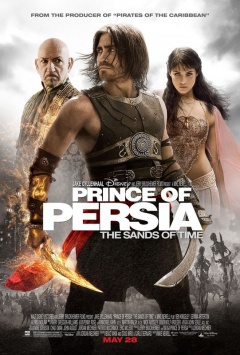 Here we go with another video game adaptation, this time with Disney’s Prince of Persia: The Sands of Time. Released last year, it is based on the Xbox, PlayStation 2, GameCube, Windows game of the same name from way back in 2003. Creator of the series, Jordan Mechner, actually wrote the film, so we at least have a bit of pedigree here.
Here we go with another video game adaptation, this time with Disney’s Prince of Persia: The Sands of Time. Released last year, it is based on the Xbox, PlayStation 2, GameCube, Windows game of the same name from way back in 2003. Creator of the series, Jordan Mechner, actually wrote the film, so we at least have a bit of pedigree here.
I don’t really ever feel the need to watch movies based on video games, so I’m usually seeking them out on purpose to rip on them. The Sands of Time is no exception, and while I fully expected the movie to suck, I was surprised to find that it was actually not terrible, but still not a very good “adaptation” of a series I’m very familiar with.
The movie stars Jake Gyllenhaal in all his shirtless manliness, plus Gemma Arterton as the damsel and Ben Kingsley in yet another video game movie after Bloodrayne. I’m not a big film nerd, but even I recognize that Kingsley is a pretty good actor that takes a ton of bad roles. I question his sanity.
Here’s my thoughts on Prince of Persia: The Sands of Time.
The QTE cure: Singin' in the Heavy Rain
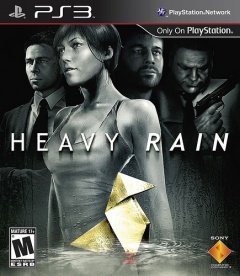 Quick Time Events. Ever since God of War and Resident Evil 4 exploded
onto the scene with button-prompt sequences of gore and horror, the
industry has shown its sheep-like nature and incorporated these Gotcha!
moments into games without thinking about how they make an
interactive experience better. Many gamers have adjusted to the fact
that every cutscene now has an awful series of play buttons throughout, but I
personally would like to cram all the QTEs in the world into a space
shuttle full of cobras and launch them directly into the sun if it meant
I'd never have to see another one again.
Quick Time Events. Ever since God of War and Resident Evil 4 exploded
onto the scene with button-prompt sequences of gore and horror, the
industry has shown its sheep-like nature and incorporated these Gotcha!
moments into games without thinking about how they make an
interactive experience better. Many gamers have adjusted to the fact
that every cutscene now has an awful series of play buttons throughout, but I
personally would like to cram all the QTEs in the world into a space
shuttle full of cobras and launch them directly into the sun if it meant
I'd never have to see another one again.
That said, it's not impossible to come across decent use of QTEs.
Indeed, before Resident Evil 4 set the standard at the advent of 2005,
the mechanic was most prominently-used by the Dreamcast's crown jewel,
Shenmue. In fact, it was Yu Suzuki, that game's director, who coined the
term "Quick Time Event." Suzuki put the gimmick to good use throughout
Shenmue, allowing protagonist Ryo Hazuki to do everything from tossing
drunkards around in bar brawls to saving little girls from incoming
soccer balls. One of the reasons the game is so beloved today is that it
allowed the player to engage in such a wide variety of scenarios, many
of which were supported with smartly-designed QTEs.
Good QTEs didn't end with Shenmue, however, even though sometimes it seems that's the case. Like God of War, other Playstation heavyweights have managed to use QTEs to enhance a game experience. I think it's only fair that we look at a few of those, as well as some alternatives to these timed button-prompts for cinematic flair in games.
Prince of Persia: Warrior Within
Prince of Persia: Warrior Within is the sequel to Prince of Persia: The Sands of Time, which was itself a relaunch of a popular 2D platformer from the early 1990s. The relaunch, developed by Ubisoft Montreal, eventually became a trilogy, released on PlayStation 2, XBox, GameCube, PC, and even a version for the GameBoy Advance. The series has since been relaunched again on the current generation of systems.
Sands of Time was very well received for many reasons, including beautiful art direction, spot-on controls, fluid animations, clever mechanics and a wonderful intangible quality. It had two main downfalls: the combat was repetitive and the game was short.
Warrior Within sets out to correct both of these follies, boasting a longer story and a much-improved combat engine that takes the acrobatic attacks of the first game and expands them to a move list that takes up several pages in the instruction manual.
With these improvements, the game has also "matured" in the video game sense, which as usual means blood and scantily-clad women. Oh, and heavy metal. I'm not really sure why Ubisoft felt this was necessary; I'm assuming it was based on customer feedback.
I played through Prince of Persia: The Sands of time a while back and enjoyed it very much. When it was over I wished it wasn't, and that's what sequels are for. Will Warrior Within satisfy my craving for more acrobatic platforming/adventuring featuring the Prince of Persia?
Note: If I say "the first game" I'm referring to Prince of Persia: The Sands of Time, not the original Prince of Persia game.

